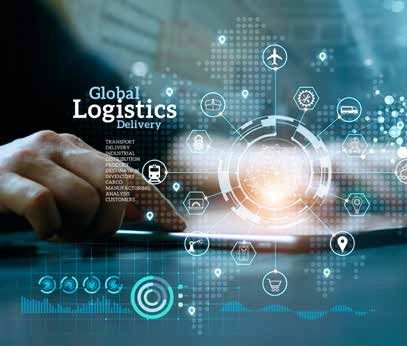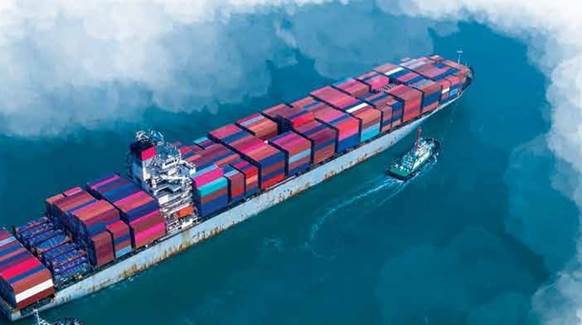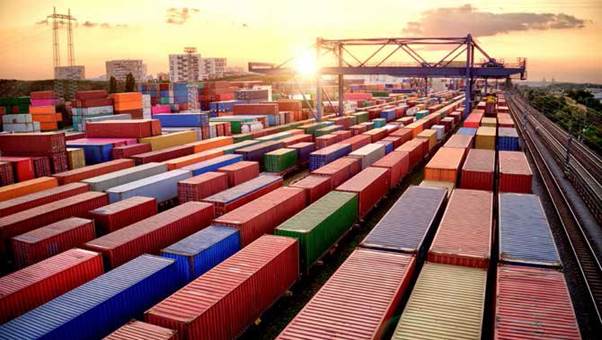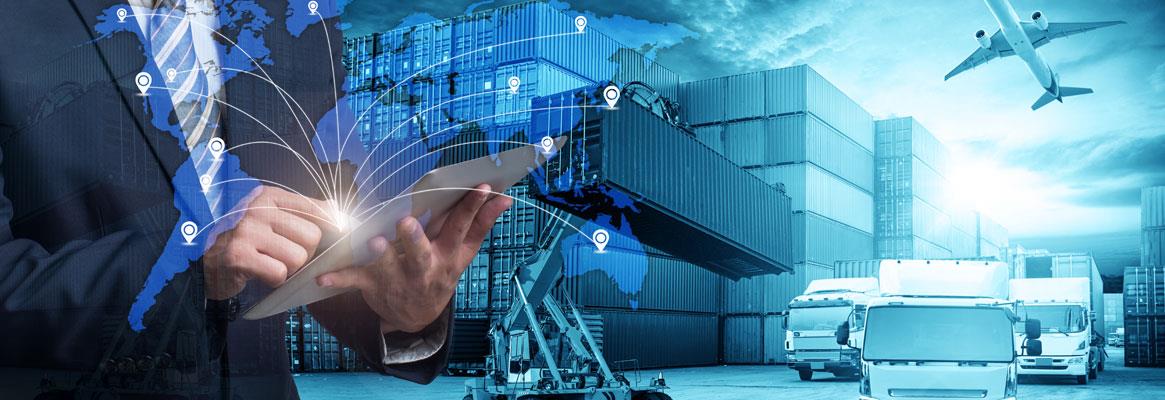When movement of people was restricted due to the COVID-19 pandemic, they took to online meetings. However, the same technology cannot satisfy movement of goods—a pre-requisite for both international and domestic trade. But the logistics industry is quickly transforming towards automation, undoubtedly accelerated due to the impact of the pandemic.
For the global logistics industry, the COVID-19 pandemic has been both a boon and a bane. It has been a bane because it had to face several challenges (and is still facing many of them) including, but not limited to, shortage of containers, blockage of a sea-route, increasing sea and air freight charges, container ships' congestion at US seaports, unavailability of truck drivers in the UK, growing demand for parcel services due to e-commerce boost, and shipping delays.
Clearly, the industry was not prepared for these kinds of turbulations. As companies did what they could to adjust to the never-dreamt-of situations, several of them went through a financial strain. In the process, they realised just how stretched their global supply chains were, and how vulnerable they were to disruption.
To put in context, at the beginning of November, the average time for goods from Asia to reach their destination in the US was over 70 days, i.e. about 80 per cent longer than pre-COVID times. In addition, as cargo ships waited on both ends of their journey to get unloaded and loaded, it added to the turnaround time, further adding to the shortage of shipping containers. This led to hike in freight charges.
Thus, on the positive side, it became evident that to minimise disruption in case of a similar scenario in future, it is necessary to shorten supply chains and ensure that goods are delivered more quickly across end points. This resulted in acceleration of several pre-existing trends like digital transformation and automation, including delivery by drones, use of robots in warehouses, driverless vehicles, and fully automated logistics planning.
Emerging Technologies
The global logistics market was valued at $7.6 trillion in 2017, and is predicted to reach $15.5 trillion by the year 2023 revenue-wise, according to Fibre2Fashion’s market intelligence tool TexPro. This big leap is only possible if the industry embraces new technological advancements. The sector could take several approaches—some evolutionary, and others revolutionary—while also adopting new business models and meeting the ever-growing customer expectations.
Today, it is impossible to think of a world without any form of transport or delivery. But soon, the logistics industry—as we know it today as rail, road, sea and air transport and the accompanied warehouses—is likely to undergo a sea-change as it would get integrated with technology. To maintain a competitive edge, traditional logistics organisations would review their business models to meet changing customer expectations such as faster shipments, greater transparency, and lower costs.

When compared to companies utilising traditional service providers, organisations that use technologies such as automation, cloud-based software, and data analytics will be able to further streamline their processes and gain greater efficiency. The evolving needs of customers, of course, would play a key role in shaping the technologies that are integrated with logistics.
Internet of Things (IoT): Logistics is a field in which the IoT can play a crucial role. With IoT, data can be transferred over any network, allowing it to monitor people, employees, and equipment while ensuring their safety and security. It allows management to assess and understand the ongoing activities of a factory or a company, such as how equipment and machines are operating, ambient conditions, overall energy consumption, inventory levels, and the flow of materials, at any given moment. Moreover, it enhances in-transit visibility, leading to an increase in orders for industries. In addition, IoT has the capability of detecting problems or obstacles that may hinder the growth of any aspect of the logistics industry.
Artificial Intelligence (AI): Currently, 1.1 million robots are working and functional throughout the world. Their production and delivery processes are efficient and reliable. Furthermore, they can be used in factories along with human workers. Japan and the US have implemented robotics services and AI in several of their logistics processes. It is expected that robots will replace blue collar jobs in the near future, and chatbots will alleviate customer service frustrations.
3D Printing: It is fascinating to imagine the possibilities of 3D printing, which has become a reality in many companies today. 3D printing enables organisations to store and replace parts in virtual warehouses via data models and in digital form, which will allow them to be printed anytime and anywhere. Since most goods can be printed close to the customer with this technology, the number of last-minute deliveries will rise. There will also be 3D print centres near sales markets to promote local and regional production. By adopting 3D printing, companies are now able to manufacture products in small batches on demand, in close proximity to the end customer, and with the capability to customise the product. According to Fortune Business Insights, the global 3D printing market size is expected to grow from $15.26 billion in 2021 to $68.71 billion in 2028 at a CAGR of 24 per cent in the forecast period of 2021-2028.
Drone Delivery: Two years ago, when Amazon announced that it would use drones for delivering goods, it attracted a lot of attention. A number of companies have since announced drone delivery plans or are considering them. It is because commercial drones are programmed to deliver goods and services at low costs and in a timely manner. A locating program enables the company to pinpoint the exact location of the consumer, which helps it deliver packages faster. As technology advances, drones can be enhanced with new features that improve their efficiency during operations. This will fuel drone logistics and transportation market growth.
Driverless Vehicles: These vehicles can drive and navigate without any human assistance. Its application in logistics can reduce costs and human effort to a large extent because of its electronic eyes, ears, and sensors. As of today, only one in eight logistics companies have any knowledge or expertise in this area, making implementation challenging.
These emerging technologies are surrounded by a lot of hype. Nevertheless, logistics companies willing to experiment hold the future of the industry. A logistics company must leverage available technologies and incorporate them as much as possible into its core systems in order to reap benefits and maintain a competitive advantage.
Looking At The Future
Five to ten years from now, what will the logistics marketplace look like? There is still a lot of uncertainty. Digitisation and escalating customer expectations are forcing logistics companies to undergo unprecedented change. New technologies offer greater efficiency and enable more collaborative operating models; they are also reshaping the marketplace to an extent that has only just begun to emerge. New entrants, existing customers and suppliers are also influencing the sector. Anthony Nuzio, the founder and CEO of the New York-headquartered ICC Logistics Services which help companies gain control over significantly rising freight costs, contends that many global supply chains were not prepared for COVID-19, despite warnings about potential supply chain shortcomings, such as the trade tensions between the US and China. Every business must work in an environment where they need to anticipate when the next disruption will arrive, “because it will happen,” he says.
Below are some of the trends that we can expect in the global logistics industry in the next few years:
Sustainability and reducing environmental footprint will be the top priorities
The transportation industry contributes a great deal to greenhouse gas emissions. Maintaining relevance will mean bringing insight and solutions to help customers lower their ecological footprint and becoming more than a ‘selling point’. As sustainability becomes a high priority, companies will focus on developing new product lines in areas such as alternative fuels, emerging technologies, and alternative supply chains. They will demonstrate relatively greater focus and progress instead of just talking the talk.
Electromobility will contribute largely to greener transportation
Electromobility and the development of environmentally friendly energy sources is another strong trend. The development of electric vehicles and powertrain systems will accelerate as focus shifts from oil-based fuels to battery- based fuels. In the near future, there will be an increase in the use of eco-friendly fuel for maritime transportation as new regulations gradually come into force globally. By utilising electromobility, freight forwarders will be able to save on their environmental carbon footprint, and help their customers make more informed decisions about their supply chains.
Use of blockchain technology could revolutionise the logistics industry
Blockchain technology, where information is stored on a blockchain and is accessible as a digital database, is the next wave of technology. Blockchain technology stores identical blocks of information throughout its network, preventing the control of a single entity and preventing single points of failure. Anyone can access and verify the information online, and it is publicly available. This technology will revolutionise The Review of Maritime Transport 2021 published on November 18 by the United Nations Conference on Trade and Development (UNCTAD) says, “Improving the quality of port infrastructure would reduce world average maritime transport costs by 4.1 per cent, while costs would be reduced by 3.7 per cent by better trade facilitation measures and by 4.4 per cent by improved liner shipping connectivity.” The report urges continued monitoring and analysis of trends to find ways of cutting costs, enhancing efficiency and smoothing delivery of maritime trade. In the medium to longer term, it forecasts, “the maritime supply capacity will also be affected by the transition of the industry towards zero- carbon shipping. To ensure that the necessary investment in ships, ports and the provision of new fuels is not delayed, it will be important for investors to count on a predictable global regulatory framework.”
New transportation alternatives will be used
It is estimated that around 60 per cent of the world’s population will live in cities by 2030. This presents many challenges. Consumer demand in cities will increase as people shift from rural to urban centres – and the flow of logistics in and out of cities will rise as well. As a result, it is anticipated that an increased focus will be put on managing congestion, urban freight distribution, and pollution, as well as environmental-related issues such as emissions and air pollution—all at the same time. As e-commerce grows, new transport alternatives such as drones will be used to meet the increasing demand. Also, self-driving vehicles will improve city logistics. The development and maturation of 3D printing will open up new possibilities, which can only be imagined as of today.
Maritime Logistics
Ships and ports support global supply chain links and economic interdependence, as they handle more than 80 per cent of global merchandise trade by volume and more than 70 per cent by value. Hence, maritime sector acquires greater significance when disruptions like the current pandemic occur, as global trade and economic activity through sea can be adversely affected by disrupted transport networks and supply chains.
Even though it is unclear what the long-term impact of COVID-19 will be, all indicators point to immediate challenges for the industry. They vary depending on the type of maritime transport (e.g. container, bulk, reefer, tanker) and the national or international nature of the transportation operation.

In terms of environmental protection, the International Maritime Organization (IMO) has urged the industry to cut its total annual greenhouse gas emissions by at least 50 per cent by 2050 compared to 2008 levels, leading to the development of fuel-efficient and environmentally friendly technologies. After the lockdowns and resulting increase in air quality, it has been evident how critical clean technologies are to combat climate change and for continuation of life on Earth.
In terms of documentation for shipping goods, fast-paced digitisation is expected as it not only boosts efficiency, but also reduces the need for physical interactions, which is important considering how COVID-19 impacted. E-documents, for instance, allow completion of formalities more quickly without physically signing or delivering documents. This can be achieved by governments deploying appropriate technologies. For instance, Dubai is implementing a strategy involving blockchains and e-documents that aims to eliminate more than 1 billion paper documents and save $5.5 billion per year. Increasing the adoption of such technologies would result in lower costs.
The Review of Maritime Transport 2021 published on November 18 by the United Nations Conference on Trade and Development (UNCTAD) says, “Improving the quality of port infrastructure would reduce world average maritime transport costs by 4.1 per cent, while costs would be reduced by 3.7 per cent by better trade facilitation measures and by 4.4 per cent by improved liner shipping connectivity.” The report urges continued monitoring and analysis of trends to find ways of cutting costs, enhancing efficiency and smoothing delivery of maritime trade. In the medium to longer term, it forecasts, “the maritime supply capacity will also be affected by the transition of the industry towards zero- carbon shipping. To ensure that the necessary investment in ships, ports and the provision of new fuels is not delayed, it will be important for investors to count on a predictable global regulatory framework.”
Outlook For Air Cargo
Both the short- and long-term outlook for air cargo is positive. Several macroeconomic indicators point to positive growth, including manufacturing output and inventory levels; the global trade is forecast to grow at 9.5 per cent this year and 5.6 per cent in 2022, e-commerce is growing at double-digit rates, and demand for high-value cargo, like the temperature- sensitive healthcare goods and vaccines, is growing.
At the 14th World Cargo Symposium (WCS) held recently in Dublin, the International Air Transport Association’s (IATA’s) head of Cargo, Brendan Sullivan, said, “Air cargo is a critically important industry. This pandemic reminded us of that. During the crisis, it has been a lifeline for society, delivering critical medical supplies and vaccines across the globe and keeping international supply chains open. And for many airlines, cargo became a vital source of revenue when passenger flights were grounded. In 2020, the air cargo industry generated $129 billion, which represented approximately a third of airlines’ overall revenues, an increase of 10–15 per cent compared to pre-crisis levels. Looking towards the future, the outlook is strong. We need to maintain the momentum established during the crisis and continue building resilience post pandemic.”
According to IATA, the global cargo market is expected to surpass pre-crisis (2019) levels by 8 per cent and revenue is expected to reach $175 billion this year, with yields increasing by 15 per cent. In 2022, demand will surpass pre-crisis (2019) levels by 13 per cent with revenues projected at $169 billion, with an 8 per cent decline in yields.
Additionally, shippers are expected to become increasingly responsible for their emissions. If not, customers will make them accountable for them. There are now many organisations that report how much emissions their supply chains produce, and they are searching for carbon-neutral transportation solutions. Air cargo companies will be hard-pressed to meet customer expectations for the highest standards of sustainability. “The path from stabilising to reducing net emissions will require a collective effort,” according to Sullivan.
Digitalisation will also be important for air freight companies as it will drive improvements in operational efficiency. It will be particularly useful in cross- border e-commerce and special handling items like time and temperature sensitive payloads. Sullivan says, “Customers for these products want to know where their items are, and in what condition, at any time during their transport. That requires digitisation and data.”
Rail Freight Transport
In terms of rail transport market size, Asia-Pacific accounts for around 40 per cent of market share, followed by Western Europe with about 20 per cent share. Africa has the smallest share in global rail transport network.
Environmentally, while sea freight is the most efficient means of transportation, rail freight produces significantly fewer CO2 emissions than air freight—a point that has become much more important in recent years.
Today, the rail transportation industry is rapidly adopting advanced driver assistance systems to reduce costs, optimise energy use, improve operations and safety, and enhance operational management. These automated warning, protection, operation, monitoring, and control systems are provided in the advanced systems, which are also designed to meet government safety standards.
Over the last few years, China has taken the lead by laying direct rail lines to Europe. This has reduced the time for Chinese goods to reach European rail terminals to 15-18 days compared to twice as long taken by containers sent through ships. This is helping China to transport it goods directly to many European countries, sometimes with last-mile delivery via truck or short sea routes. As a result of shorter transit times, European businesses are able to react more quickly to changes in the market.
More freight train services linked China and Europe in the first 10 months of 2021 (compared to the previous year), according to the China State Railway Group, the national railway service operator. A total of 12,605 services carrying nearly 1.22 million containers operated between China and Europe from January to October. The number of trains was up 26 per cent year-on-year, while freight volume was 33 per cent higher.
According to the Group, the steady and safe operation of the services has helped it become an important strategic channel for global trade. The company has drawn up plans to increase the capacity of overseas corridors, such as by opening new routes and offering new transport models.
Meanwhile, constructions for a high- speed railway in South China’s Guangxi Zhuang Autonomous Region that would allow Chinese high-speed trains to reach the China-Vietnam border have made major progress, as all the tunnels have been drilled through. Once completed, the railway, which connects cities of Fangchenggang and Dongxing located at the China-Vietnam border, will playa major role in railway connectivity between China and members of the Association of Southeast Asian Nations (ASEAN).
The number of cross-border freight trains from Guangxi to Vietnam reached 1,496 in the first 10 months of the year, increasing 57.5 per cent year-on-year, according to China Railway Nanning Group. China is likely to continue its supremacy in inter-country rail trade with its network already reaching more than 170 cities in 23 European countries, besides Vietnam.

Challenges To Global Logistics
Thanks to technological advances, changing consumer expectations, the pandemic and stringent government regulations, global logistics companies are facing several challenges today. Here are some of the key ones:
Enhancing Business Processes: Across the enterprises polled by Inbound Logistics, 36 per cent strongly agreed that their 3PL partners helped them reduce costs and improve business processes. It is expected that logistics partners will know and understand how to drive company-wide changes, not just within supply chain and logistics operations. Additionally, financial stability, flexibility, and openness to a reasonable amount of risk are imperative. Business process improvement in the logistics business is driven by industry benchmarking, which is highly competitive.
Boosting Customer Service: Post COVID-19, the markets have become more dynamic, supply chains have grown longer and more intricate. Customer expectations regarding quality of service and delivery times have changed as well. Logistics partners are also expected to be resourceful in solving problems and helping customers grow in today’s competitive environment. Logistics partners therefore need to recruit people with the right skillsets and attitudes. In addition, the company must try to enhance and standardise the customer experience across all channels, geographies, and touchpoints, including traditional and digital channels like phone calls, online chats, e-mails, social media, etc.
Improving Supply Chain Visibility: Having full visibility into all aspects of the supply chain is vital for logistics companies to ensure accurate and on-time deliveries every time. It is important to track shipments to ensure they follow a prescribed schedule and route, and to generate alerts in case of disruptions so that immediate action can be taken. Updates should be provided to customers, such as shipping notifications, ETAs (estimated time of arrival), and the ability to track shipments online. While digitising and technological advancements are helping a lot in this regard, there is still a lot of improvising that can be done in the overall process.
Meeting Government Regulations: International shipments are heavily regulated by government policies. Every country has its own regulations, which all organisations should take utmost care of. Carrier fees and charges need to be fair on charterers and shippers, such as demurrage, which is incurred when charterers or shippers fail to return equipment/containers on time. Blank sailings, abandonment of contracted rates, as well as any other action taken by transport service providers must be minimised in order to ensure the critical services provided by shippers are protected and supply chains remain open, especially for those countries that are quite vulnerable. In the absence of customs transit regime and other transit-related measures such as lanes for transit traffic and special procedures, access to ports becomes crucial particularly when a country is landlocked.
Taking Care of Sustainability: The focus here is largely on reducing emissions, in part because of anti-idling and emissions reduction regulations implemented by governments, but also because of public perception and cost savings. In order to comply, companies can optimise routes and load loads, track and report emissions, upgrade engines and choose alternative fuels. Nowadays, consumers also expect companies to be aware of their environmental behaviour and be accountable.
This article was first published in the December 2021 edition of the print magazine.









Comments